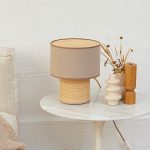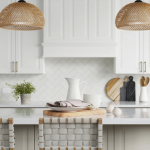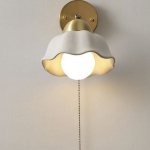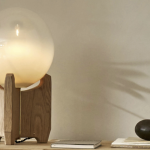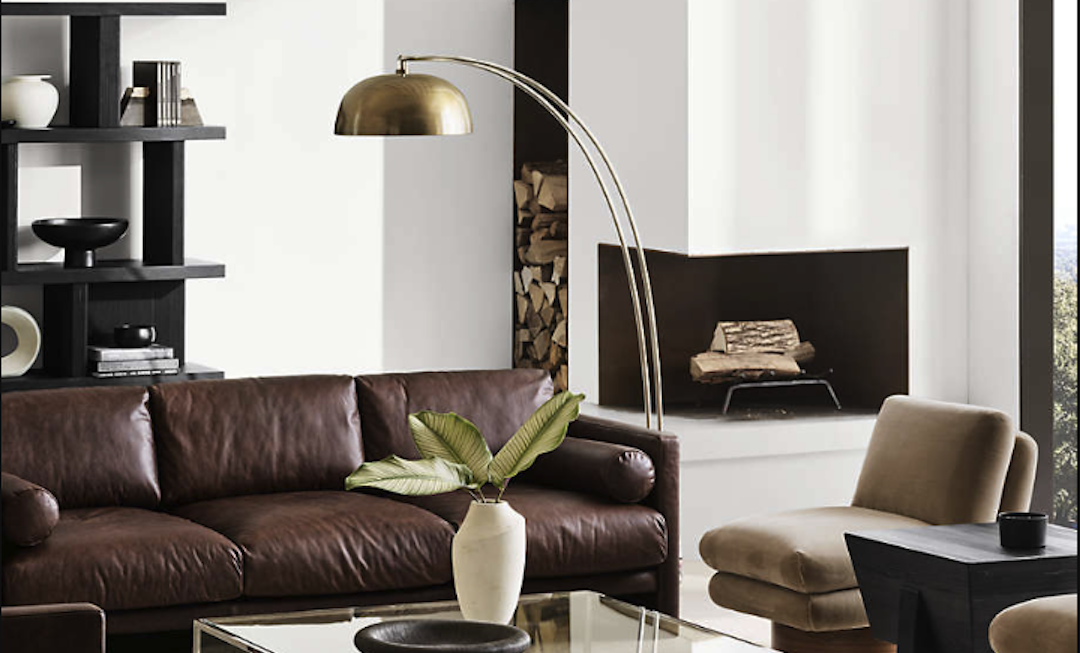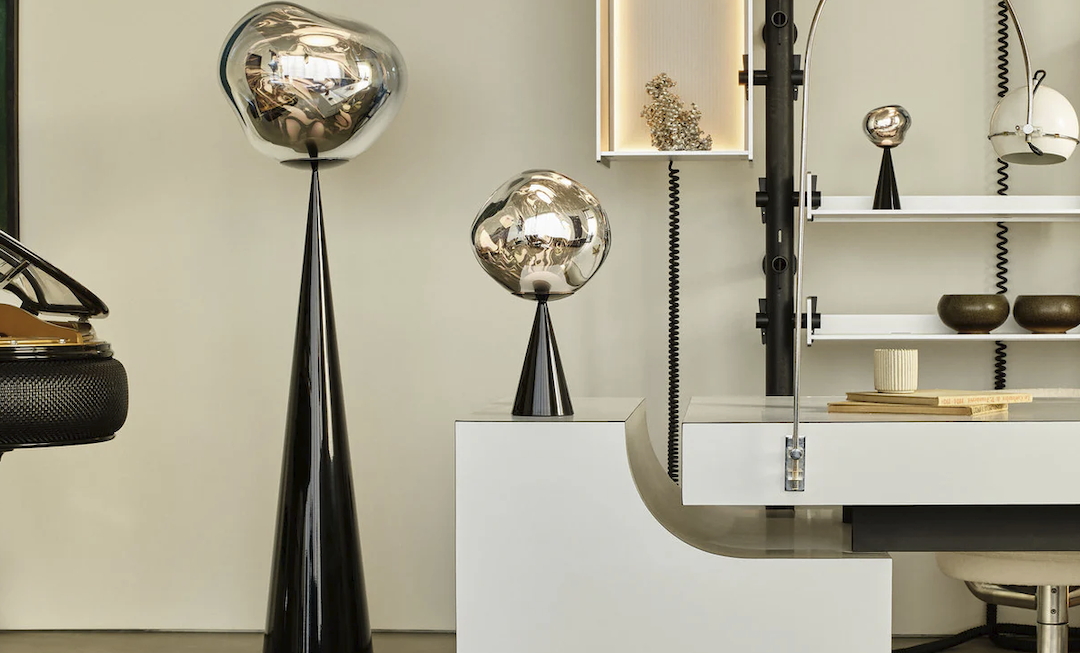Floor lamps play a pivotal role in the realm of interior design, serving not only as functional lighting sources but also as significant decorative elements. Their versatility allows them to fit seamlessly into various design styles, from minimalist to eclectic, and they can dramatically influence the ambiance of a room. Unlike overhead lighting, which can often create harsh shadows and an uninviting atmosphere, floor lamps provide a softer, more diffused light that can enhance the comfort and warmth of a space.
This quality makes them particularly valuable in living areas, bedrooms, and reading nooks, where a cozy environment is paramount. Moreover, floor lamps can act as focal points within a room. A well-chosen lamp can draw the eye and complement other design elements, such as furniture and artwork.
For instance, a sleek, modern floor lamp can contrast beautifully with vintage furnishings, creating a dynamic interplay between old and new. Additionally, the height and design of a floor lamp can help to balance the proportions of a room, making it feel more cohesive. By understanding the importance of these lighting fixtures, homeowners can make informed choices that elevate their interior spaces.
Finding the Right Size and Style for Your Space
Proportion is Key
The height of the lamp should be proportionate to the furniture; for instance, a tall lamp may overwhelm a low-profile sofa, while a short lamp might get lost next to a high-backed chair. A general guideline is that the bottom of the lampshade should be at eye level when seated, typically around 58 to 64 inches from the floor. This ensures that the light is directed where it is needed most without causing glare.
Style Matters
In terms of style, it is essential to consider the overall aesthetic of the space. A contemporary room may benefit from sleek lines and metallic finishes, while a traditional setting might call for ornate designs with warm wood tones.
Color and Integration
Color plays a significant role in how a lamp integrates into its environment. A bold-colored lamp can serve as an accent piece, adding a pop of color to an otherwise neutral palette. Conversely, a lamp in muted tones can blend seamlessly into the background, allowing other design elements to take center stage. By carefully considering both size and style, homeowners can select floor lamps that enhance their interior design vision.
Choosing the Best Placement for Floor Lamps in Different Rooms
The placement of floor lamps is just as important as their selection. In living rooms, positioning a floor lamp next to a sofa or armchair creates an inviting reading nook while providing necessary illumination for activities like knitting or browsing through magazines. Placing two matching floor lamps on either side of a couch can also create symmetry and balance within the space.
In contrast, placing a single lamp in a corner can help to illuminate dark areas and make the room feel larger by drawing the eye upward. In bedrooms, floor lamps can serve multiple purposes. A lamp placed on either side of the bed can provide adequate lighting for nighttime reading while also acting as decorative elements that enhance the overall design.
Additionally, placing a floor lamp in a dressing area or near a closet can provide focused light for tasks such as selecting outfits or applying makeup. In dining rooms, a strategically placed floor lamp can create an intimate atmosphere during meals, especially when combined with dimmable bulbs that allow for adjustable brightness levels. Thoughtful placement ensures that floor lamps not only illuminate but also enhance the functionality and aesthetic appeal of each room.
Exploring Different Types of Floor Lamps: Task, Ambient, and Accent Lighting
Floor lamps come in various types, each serving distinct purposes within interior design. Task lighting is designed to provide focused illumination for specific activities such as reading or working. These lamps often feature adjustable arms or shades that allow users to direct light precisely where it is needed.
For example, an architect-style floor lamp with an adjustable neck is ideal for illuminating a workspace or reading area. Ambient lighting, on the other hand, aims to create an overall glow in a room without focusing on specific tasks. These lamps typically have wider shades or diffusers that disperse light evenly throughout the space.
A classic arc floor lamp can serve as an excellent source of ambient light while also adding an artistic touch to the decor. Lastly, accent lighting is used to highlight particular features within a room, such as artwork or architectural details. A slender floor lamp with a spotlight feature can draw attention to a gallery wall or sculpture, enhancing the visual interest of the space.
Shopping for Floor Lamps: Where to Find Quality and Affordable Options
When it comes to shopping for floor lamps, there are numerous avenues available to consumers seeking quality and affordability. Traditional brick-and-mortar stores such as home improvement centers and furniture retailers often carry a wide selection of lamps in various styles and price ranges. Visiting these stores allows customers to see and test the lamps in person, ensuring they find the right fit for their space.
Online shopping has also revolutionized how consumers purchase floor lamps. Websites like Wayfair, Amazon, and Overstock offer extensive catalogs with user reviews that can guide buyers toward quality options at competitive prices. Additionally, many online retailers provide detailed specifications and images from multiple angles, allowing customers to make informed decisions without needing to visit physical stores.
For those seeking unique or vintage pieces, thrift stores and flea markets can be treasure troves of one-of-a-kind finds that add character to any home.
DIY Floor Lamp Ideas for a Personalized Touch
Revamping Old Lamp Bases
For those who enjoy crafting or want to add a personal touch to their home decor, DIY floor lamp projects can be both rewarding and cost-effective. One popular idea is to repurpose an old lamp base by giving it a fresh coat of paint or new finish. For instance, an outdated brass lamp can be transformed with matte black spray paint for a modern look or gold leafing for a touch of glamour.
Creating a Statement Piece
Pairing this revamped base with a new shade in a bold pattern or color can create a stunning statement piece. This combination allows for endless possibilities in terms of style and design, making it easy to match the lamp with existing home decor or create a bold contrast.
Building from Scratch
Another creative project involves constructing a floor lamp from scratch using materials like wood or metal piping. Building a simple wooden tripod lamp allows for customization in height and style while providing an opportunity to showcase personal craftsmanship. This approach enables individuals to bring their unique vision to life and create a truly one-of-a-kind piece.
Adding Personal Touches
Adding unique elements such as fabric-wrapped cords or decorative bulbs can further enhance the individuality of the piece. These DIY projects not only result in personalized decor but also offer an engaging way to express creativity within one’s living space.
Maintenance and Care Tips for Your Floor Lamps
Proper maintenance and care are essential for ensuring that floor lamps remain functional and visually appealing over time. Regular dusting is crucial; using a soft cloth or microfiber duster helps prevent dust buildup on both the lamp body and shade. For fabric shades, vacuuming with an upholstery attachment can effectively remove dust without damaging the material.
Glass or metal shades may require occasional cleaning with glass cleaner or mild soap and water to maintain their shine. Additionally, checking the electrical components periodically is vital for safety and performance. Ensuring that bulbs are securely fitted and replacing any burnt-out bulbs promptly will help maintain optimal lighting conditions.
If a lamp begins to flicker or shows signs of electrical issues, it’s advisable to consult with an electrician rather than attempting repairs without proper knowledge. By following these maintenance tips, homeowners can prolong the life of their floor lamps while keeping them looking their best.
Enhancing Your Home Decor with the Right Floor Lamp Choices
The right floor lamp can significantly enhance home decor by adding layers of light and texture to any space. When selecting lamps, consider how they interact with existing furnishings and color schemes. A well-placed floor lamp can create visual interest by breaking up large expanses of wall or providing contrast against heavy furniture pieces.
For example, pairing a sleek metal lamp with plush fabrics can create an appealing juxtaposition that adds depth to the design. Furthermore, incorporating different types of lighting—such as combining floor lamps with table lamps and overhead fixtures—can create a well-rounded lighting scheme that enhances functionality while elevating aesthetics. Layering light sources allows homeowners to adjust brightness levels according to mood or activity, making spaces feel more inviting and versatile.
Ultimately, thoughtful selection and placement of floor lamps contribute significantly to achieving a cohesive and stylish interior design that reflects personal taste and enhances everyday living experiences.

